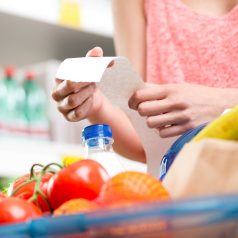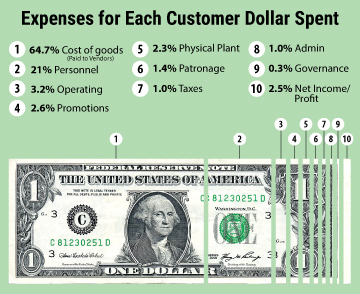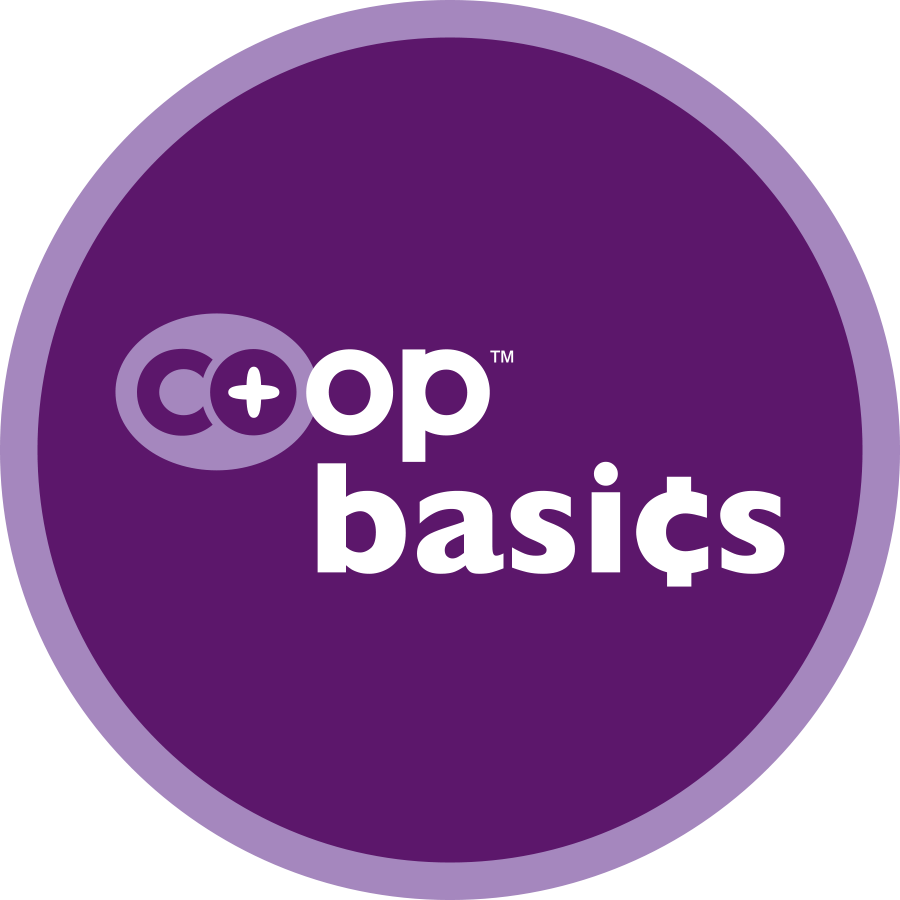
The True Cost of Food
Should farmers and farm workers be paid a fair and livable wage for their work? It is important for food to be grown and produced in ways that minimize the impact on our personal health and the health of our environment? What is that worth? The average person in our community would likely answer an emphatic yes to those first two questions, though it can be difficult to draw connections between those issues and the price tags on our food. As a mission-driven natural foods Co-op, these are questions we grapple with daily and it can be difficult to strike a balance between offering foods at an attractive price, while still ensuring good environmental, health, and labor practices.
Understanding the true cost of food is key, though the many hidden costs associated with “cheap food” make it challenging to do so. When one considers the externalized costs of cheap food – those that aren’t immediately reflected on a price tag – it becomes evident that, in many ways, cheap foods are much more expensive in the long run. Their impacts are not always obvious or visible, though we pay for the damage through taxpayer dollars spent on subsidies, environmental cleanup, and rising healthcare costs associated with poor diet, adverse farm labor conditions, and exposure to farm pollution. Unfortunately, the market is heavily tipped in favor of those who produce food unsustainably. Consider the impacts:
Environmental Impacts:
- agricultural runoff is the #1 pollutant of US rivers and waterways, killing wildlife, reducing biodiversity, and contaminating groundwater.
- The EPA estimates that we could save $15 billion in water treatment spending if we eliminated agricultural pollutants
- chemical agriculture destroys pollinators and other beneficial insects that are critical to the security of our food supply
- chemical agriculture results in superweeds and superbugs, which require ever-larger doses of chemicals to deter
- chemical agriculture degrades and strips precious topsoil at an estimated loss of 24 billion tons of topsoil per year
- The average food item travels 2,000 miles before arriving on your plate, resulting in significant carbon expenditure
Impacts for farmers and farmworkers:
- Farmers and ranchers receive, on average, only 15.6 cents of every food dollar that consumers spend on food. According to USDA, off-farm costs including marketing, processing, wholesaling, distribution and retailing account for more than 80 cents of every food dollar spent in the United States.
- Farmworkers receive an even smaller share of the retail dollar, usually about one-third of what the farmer receives.
- About 75 percent of the workers on U.S. crop farms were born abroad, mostly in Mexico, and exploitative labor practices among the migrant farmworker community are all too common.
- Exploitative labor practices (much of it involving child labor abuses) are well documented for many imported products, as well. Particularly with produce, chocolate, and coffee.
- Low wages in the farming and food service industries cost US taxpayers $153 billion per year in government assistance programs
- Federal farm subsidies & crop insurance (which prop up the largest 10% of mega-farms and leave smaller, diversified farms in the lurch) cost US taxpayers $20 billion per year
Impacts to Human Health:
- One in three adults is considered clinically obese, along with one in five kids
- 24 million Americans are afflicted by type 2 diabetes, with another 79 million people having pre-diabetes.
- Obesity-related health conditions cost $2 trillion globally and $147 billion in the US each year
- Antibiotic resistance, much of which is related to the abundance of antibiotics in our food and water supply, costs $55 billion per year in the US
- Endocrine disrupting chemicals like those found in pesticides & food packaging costs the U.S. more than $340 billion annually due to health care costs and lost wages
- Loss of productivity due to obesity-related absenteeism ranges between $3.38 billion ($79 per obese individual) and $6.38 billion ($132 per obese individual)
This video produced by the Sustainable Food Trust does a great job of breaking it down:
“But, organic, fairly-traded, sustainably produced food seems so expensive!”, you might be saying. Consider this: In the US, we spend less than 9% of total household income on food. This figure has dropped significantly over the last half-century, from 40–50% of household expenditure. In short, we spend less of our income on food than any other people at any time in history. We currently spend more per family on alcohol than we do on fruits and vegetables. Food has never been cheaper and more abundant than it is today, and we, as a society have never been more overfed and undernourished. We can no longer afford to eat this way.
So, what’s the alternative?
Small, diversified, organic farms use less fuel and produce fewer greenhouse gases than their conventional monoculture mega-farm counterparts. They raise animals in appropriate scale and rotationally graze animals to avoid over-grazing and to allow the land to naturally recycle animal wastes, which, in turn, helps build and fortify the soil. They rotate crops and employ beneficial insects to minimize issues with pests and avoid pesticides. They use green manures (cover crops) and compost to fortify and build fertile topsoil. Buying meat & produce from local farmers saves 17 times the fuel costs associated with the typical well-traveled meats, fruits, and veggies from afar.
You can also feel confident that the money spent on local food is having a direct positive impact on your local economy, supporting a local farm family, and helping to preserve the agrarian landscape that we treasure so dearly in Vermont. When your recipe calls for foods that are not grown or produced in Vermont, buying foods bearing fair-trade certification guarantees that exploitative labor practices have been avoided and a premium is being paid to the farmer. Of course, the point-of-purchase price of these foods is higher. It simply costs more (up front) to produce food this way, though it’s far more reflective of the real values associated with producing the food item.
When you’re spending your hard-earned food dollars at your neighborhood food co-op, you’re going one step further to ensure that your local farmers are getting a fair shake and that everyone who handles that food throughout the supply chain is paid fairly. Co-ops work with significantly more local farmers and producers than their conventional grocery store counterparts and offer more organic and fair trade certified products as a percentage of total grocery sales. Our Co-op works with over 400 local farmers and producers, generating more than $3.5 million in sales to local farmers and producers every year. $1.3 million of that goes directly to Addison County farmers and producers. We also strive to keep costs as low as possible by taking a lower margin on local products. Here’s a breakdown of where your food dollar goes when you spend it at the Co-op:

Of course, we recognize that there are many people who would love to be able to purchase 100% local, organic, and/or fairly traded food but their budget simply won’t allow it. We acknowledge that affordable access to healthy foods is a challenge. To that end, we have two programs at our Co-op aimed at addressing this issue: Food for All and Co-op Basics. Through our Food For All program shoppers who are currently enrolled in SNAP or WIC, Home Heating Assistance, or clients of our local Food Shelves are eligible to enroll in the program and shop with a 10% discount on all items (excluding alcohol, by law). The Co-op Basics program is for all shoppers and offers everyday staples throughout the store that fit your budget. Just look for the purple tags.

